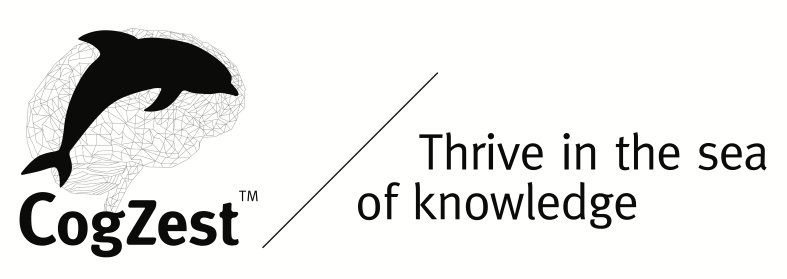This post briefly describes an approach to studying minds and designing artificial ones; the need to name this approach; the term integrative design-oriented as the name for the approach; and the need for a manifesto regarding the approach. In the main, it points to a draft manifesto.
For many years I was dissatisfied with the name I used to refer to a certain approach to human mind (cognitive science and AI). How we name scientific concepts is actually quite important. In Cognitive Productivity: Using Knowledge to Become Profoundly Effective, I referred to the approach as “broad cognitive science”.[1] I used the term “broad” to convey an attempt to understand a wide spectrum of capabilities that are often treated in isolation from each other under the banners of “cognition”, “affect” (“emotion” / “attitudes”, “moods”), “motivation”, “volition”, “executive functions”, etc. The approach means not to study these functions in isolation from each other, but as interacting and often blended mechanisms. By “cognitive science” I also meant an expansive approach to understanding human mind — one that is truly interdisciplinary and computational.
It is handy to have an adjective that names an approach and stance, its methods, and theories. In the cognition and affect project at the University of Birmingham, of which I was a founding Ph.D. student (1991), Aaron Sloman and I adopted a couple of expressions: “design-based” research and “architecture-based ” (AI). “Design-based” was an adjectival phrase for “from the design stance” — the “design stance” being Dennett’s expression (but Dennett is not the originator of the concept). However in social sciences, “design-based” research came to mean something very different. So I became dissatisfied with “design-based”. “Architecture-based” served us for a while. But unfortunately, it puts the emphasis in the wrong place. Yes, computational architectures are very important, but what matters more than architectures is the design stance and the integration of functions.
There is a key concept and term to emphasize over and beyond breadth: integration. And there it was that two or three years ago, I settled on the “integrative design-oriented” (IDO). “IDO” can can be applied to theory, methods, etc. You may have noticed my use of this expression on this blog and elsewhere.
The need for a manifesto…
“Integrative design-oriented” could still mean too many things. More important than terms of course are concepts. And this post is ultimately not mainly about terms but concepts. Cognitive Productivity does describe the IDO approach. But the book is > 210,000 words, and it deals with many things. To convey the meaning of the IDO approach and to underscore its importance, a more specifically targeted and shorter document is required.
At AISB-2017, I presented a paper on perturbance which included a claim about the “replication crisis” in psychology:
Psychology often lacks sufficient theory for the phenomena it empirically investigates. We call for (1) a better explicit characterization of human capabilities, an exploration of mental architectures (designs), and implementations [2]; and (2) empirical research driven by unified theories of mind [18,19]. Cognitive architectures, still largely ignored in psychology, are not enough; affective processes deserve equal consideration.
A related and more extensive argument was recently made by Muthukrishna & Henrich (2019), “A problem in theory”
We argue that a large part of the problem is the lack of a cumulative theoretical framework or frameworks. Without an overarching theoretical framework that generates hypotheses across diverse domains, empirical programs spawn and grow from personal intuitions and culturally biased folk theories. By providing ways to develop clear predictions, including through the use of formal modelling, theoretical frameworks set expectations that determine whether a new finding is confirmatory, nicely integrating with existing lines of research, or surprising, and therefore requiring further replication and scrutiny. Such frameworks also prioritize certain research foci, motivate the use diverse empirical approaches and, often, provide a natural means to integrate across the sciences. Thus, overarching theoretical frameworks pave the way toward a more general theory of human behaviour.
Whether there is a replication crisis in psychology or not, psychology has been held back by lack of concern for integrative theory that can actually explain competence and an extreme tendency to run empirical studies in the absence of such theory. To say the least, the integrative design-oriented approach is not the norm in psychology.
At that same (AISB-2017) conference, I pitched an idea to some of my colleagues, namely to publish a manifesto about the IDO approach. My goal was (and is) to help researchers understand the approach, and the need for this approach. As with other manifestos, it aims to influence.
Well, at the World Sleep Congress in Vancouver, BC, in 2019, I presented the first draft of the IDO manifesto. The World Sleep Congress may seem like a very unusual place to present such a manifesto because as far as I can tell the vast majority of sleep researchers are not conversant with cognitive science and artificial general intelligence. However, I used that venue because I have for years been developing an IDO theory of the sleep onset control system. In fact, I argue that sleep onset and insomnolence cannot be understood without taking such an approach.
Today, I’ve published a new draft of the IDO manifesto, this time on its own web page. It’s still in an unpolished state. But it’s perhaps clear enough for feedback, contributors and potential signatories. With the recent publication of Rebooting AI by Gary Marcus & Ernest Davis, it seems timely.
So if you’re a cognitive scientist or AI researcher interested in the document, please feel free to comment/get in touch about it.
footnotes
Revisions
2019-11-17 11:50 PM (Pacific) . Reorganized.
1. My choice of the expression “broad cognitive science”” has a history that I’ll describe later. It’s based on the 1991 “Broad Agents” paper by Joseph Bates, Bryan Loyall & W. Scott Reilly; and on Building Emotional Agents

One thought on “Draft Manifesto for Integrative Design-oriented Cognitive Science and AI”